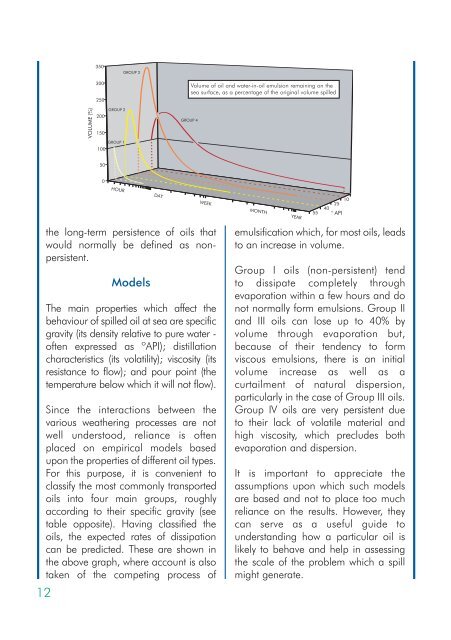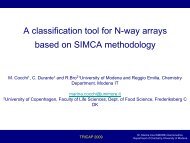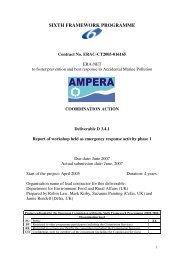Members Handbook 2002 - Centre d'Investigació i ...
Members Handbook 2002 - Centre d'Investigació i ...
Members Handbook 2002 - Centre d'Investigació i ...
Create successful ePaper yourself
Turn your PDF publications into a flip-book with our unique Google optimized e-Paper software.
Volume of oil and water-in-oil emulsion remaining on thesea surface, as a percentage of the original volume spilledthe long-term persistence of oils thatwould normally be defined as nonpersistent.12ModelsThe main properties which affect thebehaviour of spilled oil at sea are specificgravity (its density relative to pure water -often expressed as ºAPI); distillationcharacteristics (its volatility); viscosity (itsresistance to flow); and pour point (thetemperature below which it will not flow).Since the interactions between thevarious weathering processes are notwell understood, reliance is oftenplaced on empirical models basedupon the properties of different oil types.For this purpose, it is convenient toclassify the most commonly transportedoils into four main groups, roughlyaccording to their specific gravity (seetable opposite). Having classified theoils, the expected rates of dissipationcan be predicted. These are shown inthe above graph, where account is alsotaken of the competing process ofemulsification which, for most oils, leadsto an increase in volume.Group I oils (non-persistent) tendto dissipate completely throughevaporation within a few hours and donot normally form emulsions. Group IIand III oils can lose up to 40% byvolume through evaporation but,because of their tendency to formviscous emulsions, there is an initialvolume increase as well as acurtailment of natural dispersion,particularly in the case of Group III oils.Group IV oils are very persistent dueto their lack of volatile material andhigh viscosity, which precludes bothevaporation and dispersion.It is important to appreciate theassumptions upon which such modelsare based and not to place too muchreliance on the results. However, theycan serve as a useful guide tounderstanding how a particular oil islikely to behave and help in assessingthe scale of the problem which a spillmight generate.






